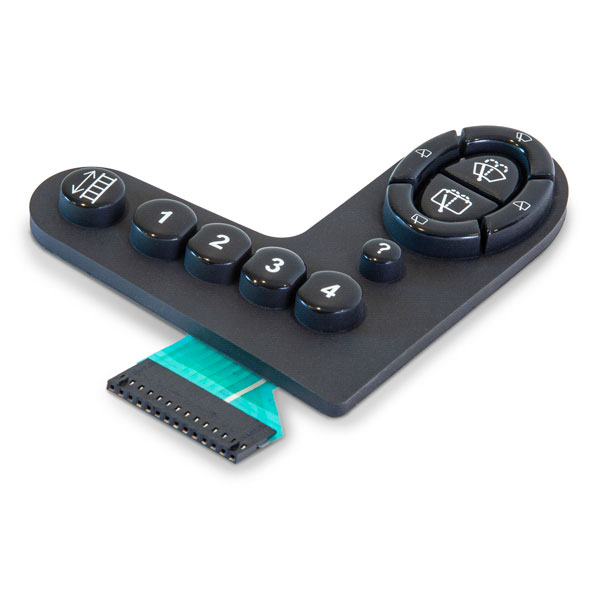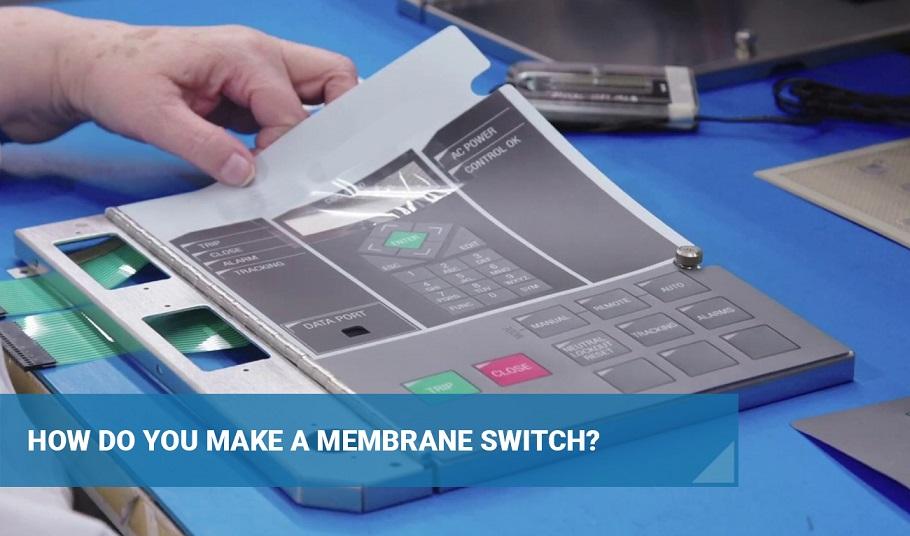Comprehending Membrane Layer Changes: The Key to Long Lasting and Trusted Controls

What Are Membrane Buttons?
Membrane switches are a sophisticated option in the world of customer interface technology, combining functionality and layout seamlessly. These gadgets serve as a user interface between individuals and electronic systems, incorporating several parts right into a portable format. Normally created from flexible, thin layers of materials, membrane switches are developed to react to touch, allowing customers to interact with machinery and electronic devices efficiently.
The primary elements of a membrane layer button consist of a published circuit layer, visuals overlay, and a spacer layer that protects against unplanned activation. The graphic overlay can be customized to reflect brand identification or customer choices, boosting looks while making certain use. Membrane layer switches are typically utilized in various applications, including medical tools, customer electronic devices, and industrial equipment, owing to their resilience and resistance to environmental variables such as moisture and dirt.
Among the key benefits of membrane layer buttons is their ability to hold up against wear and tear, making them perfect for high-traffic environments. In addition, they are light-weight and need minimal room, permitting for cutting-edge styles in item advancement. In general, membrane layer changes represent a effective and practical selection for contemporary electronic interfaces, weding technology with user-centric layout principles.
Just How Membrane Switches Job
The procedure of membrane switches over joints on an easy yet reliable device that translates customer input right into electronic signals. When an individual presses the button, the leading layer warps, permitting a conductive component in the circuit layer to make contact with a corresponding conductive pad on the bottom of the visuals overlay.
The layout of membrane switches can differ, yet they typically include domes or responsive elements to offer feedback to the user, improving the total experience - membrane switch. The products made use of in membrane buttons, such as polyester or polycarbonate, contribute to their resilience and resistance to environmental aspects, consisting of dampness and dirt. The published circuits are typically encapsulated, which protects them from wear and tear over time.
Benefits of Membrane Buttons

Furthermore, membrane layer buttons are recognized for their toughness. Created from durable products, they are resistant to dust, wetness, and physical wear, which dramatically expands their lifespan compared to conventional mechanical switches. This longevity makes them particularly suitable for high-traffic environments and applications needing durability.
One more considerable advantage is the convenience of cleansing and upkeep. The smooth surface area of membrane layer changes lessens dust accumulation and is commonly resistant to spills, making them excellent for setups that call for regular sanitization.
Additionally, membrane layer buttons use a streamlined profile, leading to a thinner design that can be incorporated right into numerous gadgets without adding bulk. This feature not just improves the visual allure yet likewise adds to a much more ergonomic product layout.
Applications of Membrane Layer Buttons
Functional and straightforward, membrane buttons discover applications throughout a wide variety of markets, including clinical gadgets, consumer electronic devices, and commercial devices. In the medical area, Website these switches are integral to tools such as diagnostic devices, client monitoring systems, and mixture pumps, where dependability and ease of cleansing are vital. Their ability to endure extreme atmospheres and maintain capability makes them suitable for such applications.

In customer electronics, membrane layer buttons are made use of in items like microwaves, cleaning equipments, and remote controls - membrane switch. Their sleek design permits intuitive individual interfaces, enhancing the general customer experience while providing longevity and resistance to tear and put on
Industrial devices additionally takes advantage of membrane buttons, especially in control panels for equipment and automation systems. These switches provide defense versus dust and wetness, making certain consistent click here for info efficiency in challenging atmospheres. In addition, their customizable functions enable makers to tailor them to particular operational requirements, boosting performance and functionality.
Picking the Right Membrane Layer Switch Over
When picking a membrane button, it is vital to consider numerous aspects that affect efficiency and viability for details applications. The main considerations include environmental conditions, responsive responses, durability, and layout requirements.
First, assess the operating atmosphere; switches exposed to wetness, chemicals, or extreme temperatures call for details products to make sure long life and capability. Next off, evaluate the requirement for tactile responses. Depending upon individual interaction, some applications might gain from a responsive response to verify activation, while others may favor a non-tactile layout for visual factors.
Sturdiness is another crucial factor; membrane layer buttons ought to be designed to hold up against frequent usage, influences, and abrasion. Make sure the picked button can endure the expected lifecycle, especially in high-usage situations.

Verdict
Finally, membrane layer switches act as essential parts in the layout of long lasting and reliable control systems throughout numerous industries. Their portable layout, combined with durable building and customizable functions, improves customer see post interaction while making sure long life in requiring atmospheres. The flexibility of membrane layer changes enables customized options that meet particular operational demands, strengthening their significance in modern-day technology. As industries continue to develop, the value of incorporating efficient membrane layer switch options can not be overemphasized.
Membrane changes stand for a crucial aspect of modern interface layout, mixing capability with strength in numerous applications.Membrane buttons are an advanced remedy in the world of user interface technology, combining performance and design effortlessly. Generally constructed from flexible, thin layers of materials, membrane buttons are developed to react to touch, making it possible for individuals to interact with equipment and electronic tools efficiently.
The layout of membrane buttons can differ, however they often include domes or responsive components to give responses to the user, improving the total experience.In final thought, membrane layer changes serve as necessary parts in the style of trusted and long lasting control systems throughout various markets.